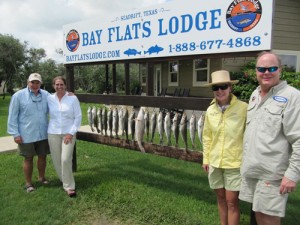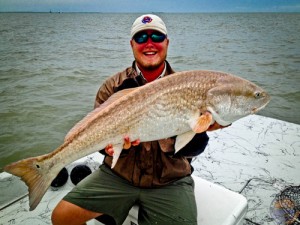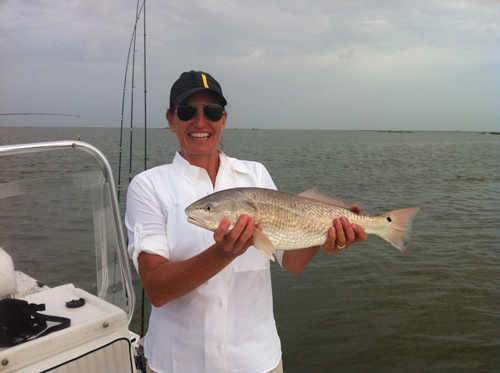We’ve been working areas with 2 to 3 feet of soft shell or what I call reef beds. Concentrate casting to the end of the reef or the curves near area reefs. When I say beds, there is a distinct difference between reef beds that are under water and reefs that protrude out of the water. These beds vary in depth but most of them slowly taper from 1 foot to 4 feet of water. Knowing when to fish these beds has been the most contributing factor in my recent catches. Just the other day while fishing someone asked me, why don’t you go far distances when you decide to move? I personally think trout stay within a general area. Yes, they will move away from a spot. But if you were catching good numbers and size trout earlier in the day, why wouldn’t these same trout move back at a later time or date? This really makes your gears turn upstairs. Getting inside a trout head is what I’m always thinking about, before making any move. Try to visualize what a trout would do if given the same circumstances.
The sand and grass shorelines have been much slower for me than others. Talking with a few of my counter parts, shoreline fishing has been much better for them. I guess I’m too hung up on shell to make the switch. They’re telling me, live fin fish while wade fishing has been the best method for catching trout and reds. The bite has been very early and normally is over after 9:00 AM. I noticed the early and late bite during out last full moon. Our back lakes have also slowed way down compared to earlier in the month. One thing I’ve noticed that hurt my fishing in the backcountry, the strong nagging south winds. The south to southwest wind is the kiss of death for pulling water out of the bay system. Hot weather and very low tides makes for fair red fishing, but trout prefer deeper water or cooler shell during the hot month of July.
Let’s now discuss fishing during the month of July. Here are a few tips that might help during this month. If the winds lay way down, key in on the surf action. I will continue to focus on reef beds until they play out. My feeling is, once San Antonio Bay heats up from the rising temperatures, deep reefs will produce better then the shell beds. I will also continue to fish San Antonio Bay, Carlos Bay, Mesquite Bay, Espiritu Santo Bay, and given the opportunity fish the shorelines near Seadrift.
My favorite passion is fishing with top water lures while wade fishing. Just the other day, a customer couldn’t believe his eyes when he saw my top water selection. He asked if color and size made a difference. I replied yes, and they also work in dirty water, rough water, and clear water. You probably won’t catch quantity every outing, but rest assured, one that chunks top water lures all day will return with better quality trout. Try using different retrieves until you figure out which one works. The hard part is, remembering what you did to create a blow up or hook up. Duplicating the same retrieve to fool another trout the second time around is the essential key to becoming a better top water enthusiast.
With soft plastic lures, the TTK lure in the plum chartreuse color has been doing very well for our parties when conditions are right. I’m rigging most of my lures with a 1/16- ounce head when fishing shallow and switching to a 1/8 ounce when deep.
As of late, the salinity levels in San Antonio Bay are high. But don’t get to use to these conditions, July can also be a month where the coast experiences severe weather and torrential downpours for days. While on the water, keep an eye out for the sky and check in frequently with someone who can check computer radar.
In closing, I want to wish everyone a safe summer on and off the water. Remember to drink plenty of water and apply sunscreen frequently.
Capt. Chris Martin, owner Bay Flats Lodge
Seadrift, TX 361-785-2686; www.BayFlatsLodge.com

John and Cami Hawkins joined Lea and Paul Holubec in a day of catching trout and a few reds with the Bay Flats Lodge group. Both couples are from Austin and love to fish!

Bay Flats Lodge guide Jonathan Beyer with a monster red caught at the jetties with sub surface lure. Fish released. July 2012.

